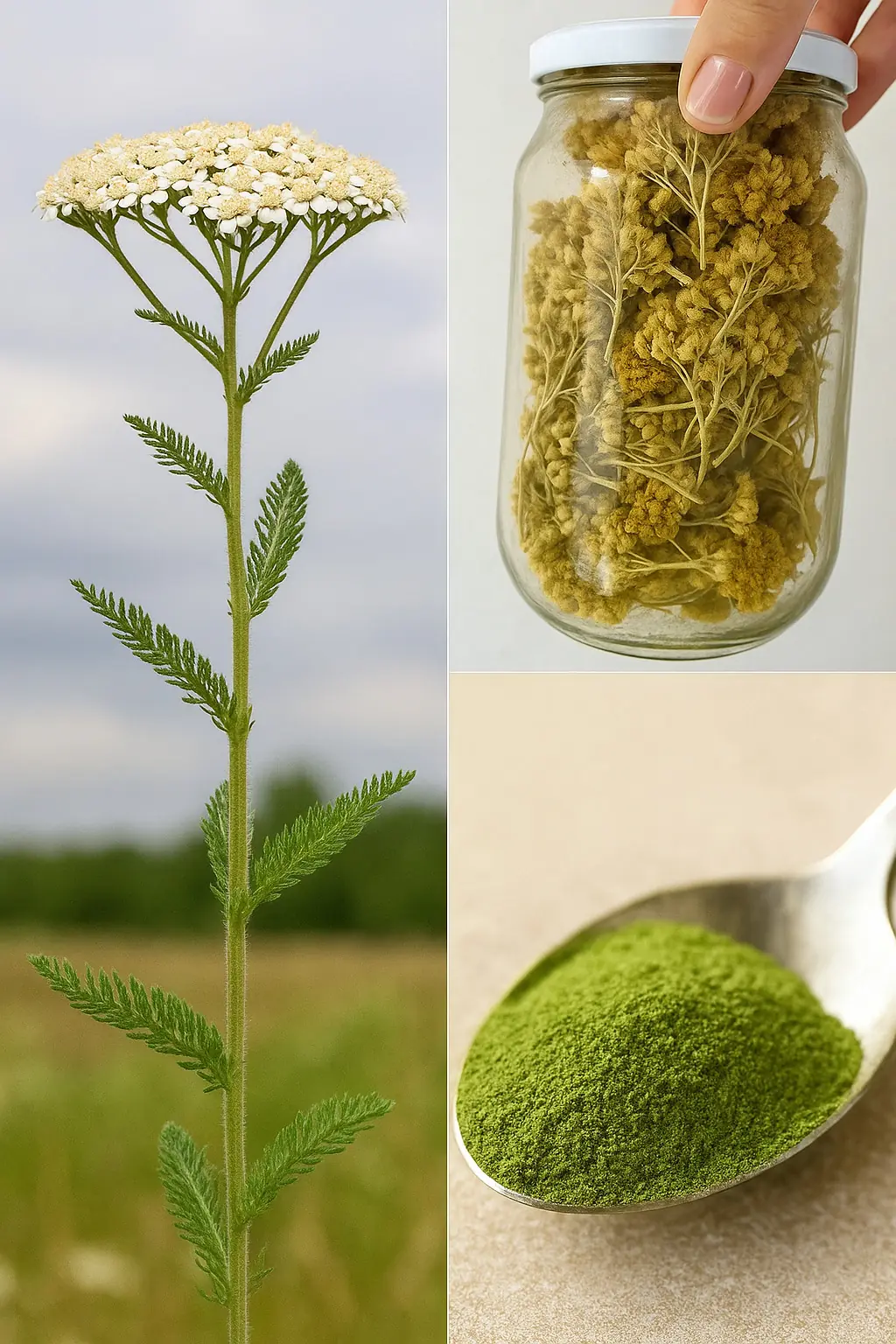
Turmeric Dosage: How Much You Actually Need for Arthritis, Cancer, and Other Diseases
Turmeric Dosage: How Much You Actually Need for Arthritis, Cancer, and Other Diseases
Turmeric isn’t just a spice that adds golden color to your curry—it’s one of the most powerful healing herbs known to humankind. This vibrant yellow root, scientifically known as Curcuma longa, has been a cornerstone of Ayurvedic and Chinese medicine for over 4,000 years, used to treat everything from digestive discomfort to joint pain and inflammation.
Modern science is now catching up with ancient wisdom, confirming what traditional healers have known for centuries: turmeric’s active compound, curcumin, has remarkable anti-inflammatory, antioxidant, and disease-fighting properties.

What Makes Turmeric So Powerful?
Turmeric’s magic lies in curcumin, the compound that gives the root its bright yellow-orange hue. Curcumin is a natural anti-inflammatory and antioxidant agent—strong enough that some researchers now call it “nature’s steroid” without the side effects.
However, there’s a catch: curcumin is poorly absorbed by the body on its own. That’s why understanding the right dosage and the best way to take it is crucial if you want to unlock its full healing potential.
The Growing Scientific Evidence
While much of the early evidence supporting curcumin’s benefits was anecdotal, the tide is turning. Every year, more double-blind, placebo-controlled trials are being conducted, confirming curcumin’s role in managing inflammation, arthritis, metabolic conditions, and even cancer prevention.
Researchers today recognize turmeric and curcumin as powerful anti-inflammatory, antibacterial, and anticancer agents. Turmeric is particularly valued for supporting digestive health—helping relieve symptoms of bloating, gas, IBS, Crohn’s disease, and ulcerative colitis.
But the benefits don’t stop there. Studies have found that turmeric may also:
-
Improve cardiovascular health by lowering LDL cholesterol and triglycerides.
-
Protect against cognitive decline, including Alzheimer’s disease.
-
Support joint health by easing pain and stiffness associated with arthritis.
-
Help regulate blood sugar levels and reduce oxidative stress.
How Much Turmeric Should You Take Per Day?
The correct turmeric dosage depends on why you’re taking it and which form you use. There’s a difference between using turmeric as a preventive supplement versus taking it therapeutically to treat a specific condition.
1. Preventive Dose
This is a low, long-term dosage that helps protect the body from chronic inflammation and oxidative damage. You can safely take it daily to support general wellness.
2. Curative Dose
A higher, short-term dosage used to target specific health issues such as arthritis, cancer, or acute inflammation. It’s not meant to be taken indefinitely but rather under professional supervision until symptoms improve.
Forms of Turmeric and How to Use Them
Turmeric comes in several forms, and the dosage varies accordingly:
-
Fresh Cut Root:
This is raw turmeric in its most natural form. Add thin slices to salads, smoothies, or teas. Avoid cooking it at high temperatures—heat destroys many of its beneficial compounds. -
Dried Root / Turmeric Powder:
Made by drying and grinding the root. You can use it in food or as a supplement. Even one teaspoon (around 3 grams) of powder daily can offer significant health benefits. -
Standardized Curcumin Extract (Capsules or Tablets):
These contain concentrated curcumin—usually standardized to 95% purity—for consistent dosing. -
Fluid Extract:
A liquid form usually mixed with vegetable glycerin and water. -
Tincture:
Turmeric steeped in alcohol (typically 20%) for better preservation and absorption. -
Turmeric Tea or “Golden Milk”:
A soothing drink made with turmeric, milk (or coconut milk), and black pepper. The black pepper’s active compound, piperine, boosts curcumin absorption by up to 2,000%!
Pro Tip: Combine turmeric with healthy fats (like coconut oil or olive oil) to further improve absorption. Curcumin is fat-soluble, meaning it dissolves best in oil.
Ideal Turmeric Dosage (Based on Health Guidelines)
According to the University of Maryland Medical Center, standard adult doses are:
-
3–5 grams of fresh cut root daily
-
1–3 grams of dried powdered root daily
-
400–600 mg of standardized curcumin extract (95%) taken three times daily
-
30–90 drops of fluid extract (1:1) daily
-
15–30 drops of tincture (1:2) up to four times daily
Condition-Specific Turmeric Dosages (Per WebMD and Experts)
-
Upset Stomach: 500 mg turmeric, four times daily
-
Osteoarthritis: 500 mg turmeric extract (95% standardized curcumin), twice daily
-
Rheumatoid Arthritis: 500 mg curcumin extract, twice daily
-
General Inflammation: 400–600 mg curcumin (standardized), three times daily (Dr. Andrew Weil)
For acute pain or inflammation, a short-term higher dose may be used under medical supervision until symptoms improve.
Turmeric Dosage for Cancer Support
Some experimental protocols have explored higher doses for cancer therapy, though these should always be done with professional guidance:
-
Week 1: 1 gram of curcumin daily
-
Week 2: 2 grams daily
-
Week 3: 4 grams daily
-
Weeks 4–8: 8 grams daily
This gradual increase allows the body to adjust and helps monitor for any side effects.
Possible Side Effects and Precautions
Turmeric is considered very safe for most people, especially at dietary levels. However, high or prolonged doses can cause mild side effects in some individuals.
Potential concerns include:
-
Lower blood sugar: Diabetics should monitor glucose closely.
-
Reduced blood pressure: Avoid combining with antihypertensive drugs or herbs with similar effects.
-
Increased bleeding risk: Turmeric naturally thins the blood. Avoid combining with medications like warfarin, aspirin, or herbs such as garlic or ginkgo.
-
Digestive upset: Large doses may cause nausea if taken on an empty stomach.
-
Gallbladder issues: Those with gallstones or bile duct obstruction should avoid high therapeutic doses.
-
Pre-surgery caution: Stop taking turmeric at least 7 days before surgery to prevent excess bleeding.
In summary: moderate use is extremely safe. Adverse reactions are rare and generally occur only with excessive, long-term intake.
Final Thoughts: Small Dose, Big Impact
Turmeric isn’t just a kitchen spice—it’s a proven health ally. Whether you’re looking to ease arthritis pain, reduce inflammation, or support overall health, taking the right dose in the right form makes all the difference.
Remember:
-
Pair turmeric with black pepper and healthy fats for maximum absorption.
-
Choose organic, high-quality supplements with standardized curcumin content.
-
Always consult your healthcare provider before starting high doses, especially if you take medication.
With mindful use, this golden root can truly live up to its ancient reputation as one of nature’s most powerful natural medicines.
News in the same category


6 Body Parts That Turn Black May Signal Cancer — Don’t Ignore Them

The Amazing Power of Caesalpinia pulcherrima (Peacock Flower)

White Bumps or Spots on Lips: Causes and Effective Treatments

Corn Silk: 30 Health Benefits and How to Use It

Better Than Medicine? The Shocking Truth About Dates & Blood Sugar!

7 Nuts You Should Eat for Better Health (and the #1 Nut You Should NEVER Touch)

An easy-to-dismiss symptom in your foot could be a sign of several more serious illnesses

The Most Effective Foods to Cleanse your Lungs (Research Based)

Starve cancer cells: the ultimate guide to foods that fight and feed cancer

#1 Best Way to Lower Blood Pressure Naturally and Fast

🍋 Don’t Throw Away Lemon Seeds & Peels — Here’s How to Use Them Safely

Carrot, Ginger Juice Recipe Drink this regularly and you'll notice incredible changes in your body: 5 amazing benefits of this beverage 👇

Eat more, weigh less? 5 surprising ways foods can help you burn fat

What really happens to your body when you take LOSARTAN

Stop Eating Eggs Immediately If Your Body Shows These 8 Signs

Sarcopenia: Causes of Muscle Loss and How to Regain Strength

Yarrow: A Timeless Herbal Ally with Amazing Health Benefits
News Post

4 Types of Shoulder Pain That May Signal Dangerous Cancer — Don’t Mistake Them for Simple Joint Problems

6 Body Parts That Turn Black May Signal Cancer — Don’t Ignore Them

Serrated Leaf Motherwort: A Precious Herb with Many Benefits

Banana flowers and their little-known uses

Eat these 5 fruits to avoid magnesium deficiency, keep your heart healthy and your bones strong.

The Amazing Power of Caesalpinia pulcherrima (Peacock Flower)

White Bumps or Spots on Lips: Causes and Effective Treatments

Corn Silk: 30 Health Benefits and How to Use It

Better Than Medicine? The Shocking Truth About Dates & Blood Sugar!

7 Nuts You Should Eat for Better Health (and the #1 Nut You Should NEVER Touch)

An easy-to-dismiss symptom in your foot could be a sign of several more serious illnesses

How to cook black bean perilla water to detoxify the liver and nourish the kidneys

A miracle will happen with a handful of seeds under the bed, unfortunately it's just now

Pouring white sugar into laundry detergent: A little tip that everyone loves, saves a lot of money every year

Tips for dealing with moldy and peeling walls: Simple, inexpensive, any house can do it

Stop wasting money on these 10 pantry staples

Doctor reveals 5 powerful snacks that help your body fight cancer and disease

The Most Effective Foods to Cleanse your Lungs (Research Based)
